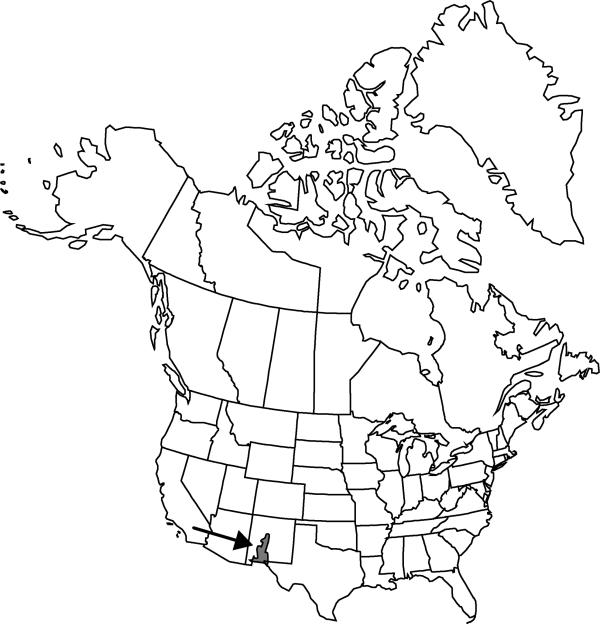familyCactaceae
subfamilyCactaceae subfam. Cactoideae
genusEchinomastus
speciesEchinomastus intertextus
Echinomastus intertextus var. dasyacanthus
Cactaceae 5: 2832. 1961.
Endemic
Basionym: Echinocactus intertextus var. dasyacanthus Engelmann Proc. A mer. Acad. Arts 3: 277. 1856
Synonyms: Neolloydia intertexta var. dasyacantha (Engelmann) L. D. Benson Sclerocactus intertextus var. dasyacanthus (Engelmann) N. P. Taylor
Revision as of 23:14, 27 May 2020 by imported>Volume Importer
Stems spheric, obovoid, or ovoid to cylindric, appearing bristly and dangerous to handle. Spines slightly appressed to spreading, except for the porrect adaxial central spine which is 4–15(–20) mm. 2n = 22.
Phenology: Flowering Feb–Apr; fruiting Apr–Jun.
Habitat: Desert grasslands and plains grasslands, upper edge of Chihuahuan desert scrub, grassy hills, bajadas, sometimes with oaks and junipers, igneous substrates (rarely limestone)
Elevation: 1100-2100 m
Discussion
In the Chisos Mountains of Texas, one isolated population of Echinomastus intertextus, identified as var. dasyacanthus on the basis of spine length, is sympatric with the vegetatively similar E. warnockii. The figure captioned as “Neolloydia” intertexta var. dasyacantha (L. D. Benson 1982, color fig. 155) is typical E. warnockii.
Echinomastus intertextus var. dasyacanthus presumably occurs in extreme northern Chihuahua, but we have not seen any specimens.
Selected References
None.
Lower Taxa
None.
... more about "Echinomastus intertextus var. dasyacanthus"
